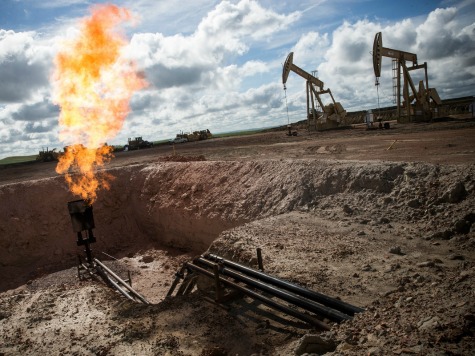Recently, Saudi Prince Alwaleed referred to shale exploration in North America as “an inevitable threat” to Saudi Arabia’s oil-based economy. Nowhere is that truer than in North Dakota, aptly nicknamed by some as “Kuwait on the Prairie”, where since 2007, oil and gas jobs have increased by 40%.
This growth translated to a July unemployment rate of 3.0% according to the Bureau of Labor Statistics.
As the economy struggles nationwide, many states cannot keep up with infrastructure maintenance as tax revenues remain stagnant or fall. In the case of North Dakota, the state is experiencing an infrastructure shortage due to rapid industrial growth, not a loss of tax revenue. As of 2012, North Dakota sat on a healthy $1.6 billion budget surplus that continues to grow along with the state’s oil and gas industry.
This rapid economic growth has come at a cost exceeding $100 million per month due to a process known as “flaring”. Flaring, the burning of natural gas reservoirs to access oil traps, is so widespread in North Dakota and the Bakken oil fields that it can be clearly seen from space. As oil exploration and recovery continues in North Dakota, oil companies do not have the equipment or infrastructure to store or transport the gas. As a result, the gas is burned until explorers can safely access the oil. Flaring isn’t expected to go away anytime soon, as the state’s 9,000 wells are expected to hit 50,000 by 2030.
North Dakota’s government responded by mandating wells be capped, connected to a gas line, or a minimum of 75% of the gas extracted be used for electric generation one year after drilling is completed. However, the law allows for some exemptions, and earlier this year Democratic State Sen. Tim Mathern attempted to introduce a bill to ban flaring with no exemptions after one year.
The controversial bill was voted down last February 13-34. Opponents of the bill cited concerns infrastructure could not keep up with building the pipelines necessary to ensure oil wells could continue production. Currently, monthly production exceeds 800,000 barrels of oil with monthly revenue over $2 billion. These production numbers are four times the monthly oil production in 2009, a testament to the incredible growth the state has experienced.
Since 2011, the amount of natural gas flared out of total extracted reduced from 36% to 29% as the state’s infrastructure construction has responded to the oil boom. As flaring continues to decrease, new technologies may allow small scale gas-to-liquid production of extracted natural gas. This process eliminates the need for pipeline connections and allows for on-site storage or vehicle transport of natural gas.
Regardless of whether infrastructure or technology catches up with oil exploration in North Dakota, America is experiencing a major domestic oil boom that continues to grow and expand North Dakota’s economy and domesticate America’s oil and gas consumption.

COMMENTS
Please let us know if you're having issues with commenting.